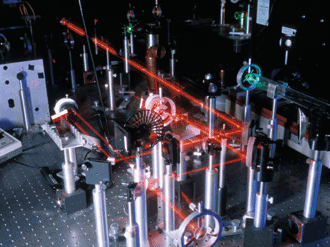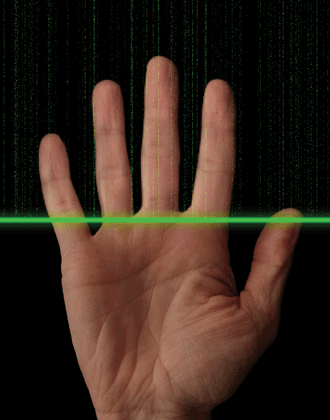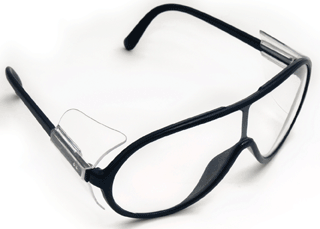Ken Barat, Laser Safety Solutions and Judy Donnelly, Three Rivers Community College
Adding real experience to classroom education prepares laser users and safety officers for real-life situations.
Laser safety training for users of Class 3B and Class 4 laser users has been required since 1973, when the first American National Standards Institute (ANSI) laser standard, Z136.1, Safe Use of Lasers, was published. That and subsequent laser standards outlined the topics to be covered, but the only change to the training requirement since that time has been with the recent ANSI Z136.8, Laser Safety in Research, Development and Testing – which added the requirement of on-the-job training.
Professional laser safety training firms provide well-crafted laser safety courses, but the training method has not significantly changed in more than 40 years, except for modifications such as embedded videos and PowerPoint effects. With limited exceptions, all have a passive lecture format.
Learning by solving
Problem-based learning (PBL) was originally developed for use in medical education and was quickly adopted by schools of business. It has only recently become more prevalent in technology and engineering education because it teaches students the process of solving open-ended problems at the same time as they are learning new material.
 Research cited by Sierra Training Associates has found that students performed less well on multiple-choice tests immediately after using a PBL process – but, six months later, the PBL students demonstrated a recall of concepts up to five times higher than groups instructed using traditional formats. Findings such as these (more research results are available at www.pblprojects.org) offer a clear reason for using PBL in basic laser safety officer (LSO) and laser safety training as often as possible. The role of the LSO is to use professional judgment; PBL gives the LSO long-lasting tools to do just that. After all, an LSO – unlike a radiation safety officer – does not just follow prescriptive rules, but must be empowered to use professional judgment based on the laser setup/application.
Research cited by Sierra Training Associates has found that students performed less well on multiple-choice tests immediately after using a PBL process – but, six months later, the PBL students demonstrated a recall of concepts up to five times higher than groups instructed using traditional formats. Findings such as these (more research results are available at www.pblprojects.org) offer a clear reason for using PBL in basic laser safety officer (LSO) and laser safety training as often as possible. The role of the LSO is to use professional judgment; PBL gives the LSO long-lasting tools to do just that. After all, an LSO – unlike a radiation safety officer – does not just follow prescriptive rules, but must be empowered to use professional judgment based on the laser setup/application.
A general PBL process could take the following steps: Individuals or groups (groups work best) are given a problem to solve. The problem should relate to anticipated work and be based on real-world situations, and should not offer easy or clear solutions. Students must identify possible needs, locate potential resources and use them. The problem should drive the need to learn more as a process of resolving it. Learning should be initiated by the problem, and that learning should be active and integrated.
An effective problem should require the students to think actively and make decisions; should consist of multiple stages, with information unfolding from stage to stage; should encourage group problem solving; and should be aligned with the course’s learning objectives.
PBL is an attempt to get the student involved in the learning process and to increase retention of the learning material. It does take more time and requires more work. In the typical laser safety course, which lasts 3 or 4½ days, the instructor often barely has sufficient time to get all the material across, especially if the class is involved and asks questions. But simply “covering the material” does not guarantee that students have learned the subject matter deeply enough to allow them to apply it to real-life situations. And the whole point of laser safety training is to prepare students to use their heads in real life.
 With careful pruning of material, the laser safety instructor can add PBL elements. The majority of examples to follow are presented with a live lecture in mind, but also could be added to a web-designed course.
With careful pruning of material, the laser safety instructor can add PBL elements. The majority of examples to follow are presented with a live lecture in mind, but also could be added to a web-designed course.
So where can PBL be added to an LSO training course? Consider the following as PBL exercises:
• Eyewear selection: Give students specifications of lasers used in a work location. Let them calculate the optical density and choose the correct filter from a list. If calculations are not part of a course, provide the wavelength and optical density needed and allow students to pick from the filter selection. Then add information such as lighting conditions, which beams are most accessible, whether alignment eyewear is available, and whether one filter fits all or are many pairs of eyewear required.
• Control area challenge: Set up a work scenario: laser, wavelength, power, basic layout. Ask students to develop standard operating procedures for safety in normal operation. How would controls change during alignment and service? Use scenarios in a factory floor, research lab, open user facility, depending on the needs and interests of the students in the class.
• Accident review: Describe the setting of a laser accident. Ask students what they found wrong and how to correct the problem. One interesting way to do this is for one or two instructors to play the role of the victim or group staff and be interviewed by a student group to determine what happened and how it could have been prevented. This has the advantage of building incident-interview skills.
 • Lab design: Show students types of lasers and basic layout and ask them to design the lab, showing safety and basic room requirements. Then ask how design would change if at a factory or large open-space user facility.
• Lab design: Show students types of lasers and basic layout and ask them to design the lab, showing safety and basic room requirements. Then ask how design would change if at a factory or large open-space user facility.
The role of an LSO and/or laser user requires professional judgment. Even in a world full of turnkey and systems/equipment integration, laser safety requires knowledge for confident decision making. This is even truer in the research setting, where access to beams is the rule rather than the exception. Poor decisions by LSOs or users can put people at risk or cause life-changing injuries. So any approach that lets students leave a training class with more than a head full of facts – with real confidence that they can address what they will find at their work environment – must be the goal.
Meet the authors
Ken Barat, a longtime LSO and laser safety expert, is the founder of Laser Safety Solutions; email: [email protected]. Judy Donnelly, program coordinator for the Laser and Fiber Optic Technology program at Three Rivers Community College in Connecticut, curates Photonics Spectra’s Workforce of Tomorrow column. She is also co-principal investigator on the PBL in Advanced Manufacturing project funded by the National Science Foundation/Advanced Technological Education project; email: [email protected].
Student-centered learning
PBL is ideally suited to adult learners – such as those found in a typical laser safety course. Compared with younger students, adults are more self-directed and learn best when new knowledge builds on their prior knowledge and life experiences. Despite the suitability of PBL to this audience, the first PBL exercise should include a walk-through of structured problem solving so that time is used most efficiently in subsequent problems. In its most basic form, structured problem solving requires:
1. Clearly defining the problem and identifying the characteristics of a successful solution.
2. Determining what knowledge group members have and what they need to learn to solve the problem.
3. Dividing the task of acquiring the needed knowledge.
4. Group brainstorming to determine the best solution.
5. Testing the solution against the characteristics listed in Step 1 to ensure a successful solution.
In this student-centered method of instruction, the teacher becomes a facilitator, providing targeted instruction on an as-needed basis. Students ask questions because of a “need to know” to solve the problem. They are more likely to pay close attention to the answer (and therefore retain the information) because it fits into a solution they are crafting with their team.
Student Feedback
Ken Barat recently received the following feedback from students after a laser safety course that included problem-based learning:
• “Class exercises were very helpful in understanding the main/key concepts that were taught in class.”
• “More exercises could be helpful with driving the info home.”
• “Exercises were great; group better than singular.”
• “The exercises were very helpful to break up the lectures.”
• “I like doing non-lecture exercises.”